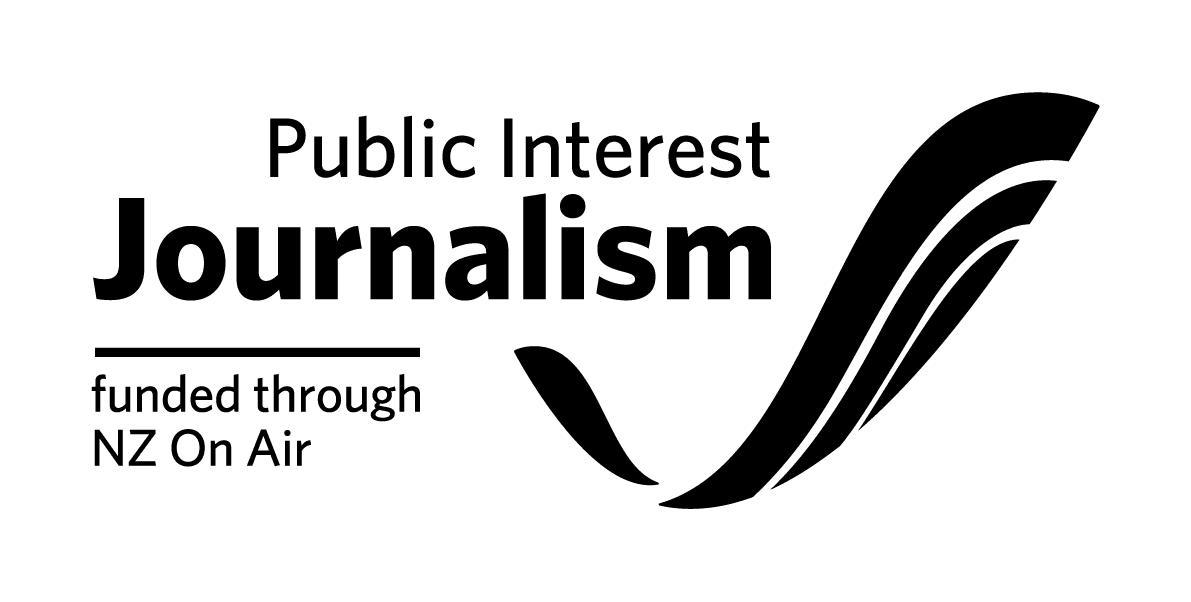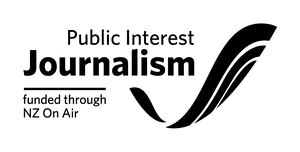Digital science projects like iNaturalist use the internet to help people access and understand the natural world. And the ecological crisis is making the work more urgent, finds Shanti Mathias.
It begins with ordinary curiosity. The line of ants climbing the doorway, moving neatly in a row: what species are they, and why do I see more of them in autumn? What’s the name of that plant with red leaves in the park, and can it photosynthesise? That funky fungi with a delicate cage structure – what is it called? Why is it there? All these living things share the world I live in, but I know very little about them. Luckily for me, there’s an app for this: I can open iNaturalist on my phone, take a photo, log my location, and find out what species I’ve been looking at.
“It’s a global revolution in biology around the world,” says Jon Sullivan, a senior lecturer in ecology at Lincoln University and one of the team who operates the Aotearoa “node” of iNaturalist, a global platform. The data from my observations as well as thousands of others can be used by scientists here, be fed into international biodiversity databases, and – if the discovery is, say, a new weed – reported to the Ministry for Primary Industries.
iNaturalist is just one of many citizen science projects that use the internet – others spot seals from space, find galaxies in the dark beyond or note kererū numbers across Aotearoa. These online projects, often enabled by omnipresent technology, widen the definition of science and open it up to more people.
Allowing the process of science to escape from the fluorescent-lit corridors of the academy can generate enormous quantities of data. Sullivan has certainly seen this with iNaturalist; since its earliest iteration in 2005, the site (along with eBird, the avian equivalent) now generates the lion’s share of information from New Zealand that goes to the Global Biodiversity Information Facility (GBIF), overtaking the painstaking taxonomy conducted in universities and museum natural history departments (although Sullivan points out that specimen naming and identification is integral to the observations that iNaturalist users produce).
Often scientific expertise is cloistered behind paywalls and impenetrable specialist language. Michelle LaRue, an ecologist working at the University of Canterbury, says citizen science projects can be at the forefront of democratising the scientific process to include more people. “I wanted to remove some of the barriers and silos [to science], so people could see what I see as a scientist,” she says. LaRue used a website to allow 300,000 people from across the world to scan high resolution satellite images of Antarctica for seals, grey blobs against the ice. The information allowed her and her team to publish the first full population count of Weddell seals in Antarctica. This data is crucial for monitoring seals which are an indicator species, meaning their health and numbers reflect the environmental conditions in Antarctica.
Using humans to comb through data still has advantages. “It’s faster and more accurate to have people look for seals,” says LaRue – she tried to train an artificial intelligence image search model to spot the pinnipeds, but it took hours to process and made more mistakes. Data quality can be an issue for scientific projects using the public; LaRue found “click happy” citizens kept wanting to see seals where there were none. Despite this, LaRue says that involving non-trained scientists was crucial to her project’s success: her team couldn’t have scanned hundreds of thousands of square kilometres of ice by themselves.
One technical mechanism which can make digital science easier for the public to access is APIs, software interfaces that allow anyone to obtain the information for their own analysis (and allowed The Spinoff to make the graphs that accompany this story). Tony Stoddard, who until last year ran the annual Great Kererū Count which asked people to note and photograph the kererū they saw over a 10-day period, said the API allowed people to watch the numbers increase as more birds were spotted. As the Great Kererū Count fed its data into the iNaturalist API, kererū became far and away the most popular bird species on iNaturalist.
While some species certainly are more charismatic than others – you’re more likely to see a child with a seal soft toy than a fungi plushie – Jon Sullivan says the iNaturalist platform attracts a surprising number of more obscure observations. “Everything is charismatic if we know enough about it,” he says. “People know what sparrows are, but they will photograph a strange plant they’ve noticed in their neighbourhood.” Often, observations are facilitated by the experts who are available to help identify species; having a fungi expert participating in the iNaturalist forums led to an influx of fungi identifications, and Sullivan regrets that flatworm and fly taxonomists are few and far between, which makes it harder to identify these creatures.
Citizen science projects are a scientific relationship, says Rhian Salmon, an associate professor who studies science engagement at Te Herenga Waka. She’s written a paper about iNaturalist and other citizen science projects, theorising what citizens, scientists and enablers receive from taking part. Scientists get data, citizens get the opportunity to participate in science, and enablers – third parties such as websites, funders, or conservation projects – facilitate the data transfer, and hope to change the behaviour of citizens who take part.
While no project is perfect, these multiple goals allow each participant in citizen science to receive something valuable. Citizen science “absolutely” changes how science is done, Salmon says. “It allows scientists to be more ambitious – and it shifts the balance of what science is.” As well as making science more transparent and accessible, citizen science is an explicit acknowledgement that knowledge and expertise can come from many people, not just scientists in lab coats and microscopes.
The institution of science has excluded many people from its processes; while widely accessible citizen science projects can begin to shift some of those power structures, the undertaking will be slow and imperfect. Sullivan says that, when funding allows it, the iNaturalist team would love to make more of the site available in te reo, or include mātauranga Māori in the way species information is gathered.
Our ecological crisis makes reimagining scientific processes even more critical. While science always builds on the work of the past, species and habitats are changing. LaRue’s seal count revealed that previous assessments of Weddell populations were dramatic overestimates. Over eight years of conducting the Great Kererū Count, Stoddard and his partner Amber Sill found that earlier willow blossoming caused kererū to emerge from their winter feeding grounds prematurely, anxious to eat the high-nitrogen buds before the breeding season; in other years, unpredictable weather meant that winter feeding lasted longer. Crucially, all these projects allow thousands of people to participate, so that information about the changes in the ecosystem are much more comprehensive than they could be otherwise.
The data collected by citizens also shows the rise of invasive species. Over the last two years, the most common fungi observed on iNaturalist has become the invasive myrtle rust, which can damage native plants by preventing new shoots growing. The pest seaweed Caluerpa brachypus which is damaging marine ecosystems around Aotea/Great Barrier Island was first identified through iNaturalist. Meanwhile, iNaturalist users have found the European paper wasp, first spotted in Nelson, dotted throughout Aotearoa. Butterfly surveys conducted in Nelson show that as the wasp population has increased, the butterfly population has gone down.
“We haven’t been collecting enough data to know what is coming,” says Sullivan. “As an ecological scientist, my highest priority right now is collecting data so that future generations can look back and see what’s changed.” Humans are remarkably good at adapting to extreme conditions and understanding them as normal; having hard data about native species moving south for cooler conditions or the spread of an invasive wasp gives scientists and citizens a way to see that this has not always been the case. To Sullivan, the ease of making observations with iNaturalist is one way to approach the challenge of gathering data now for the future.
Often, the use of digital technology is expected to separate people from the natural world; more time inside with screens, less time observing the stars that stretch into the heavens or freaky little gravel maggots or long and magnificent worms. “We have the whole internet and all its knowledge and distracting fun at our fingertips,” Sullivan says. Digital citizen science projects require a dissonance of sorts: individuals can connect with the natural world through that distracting internet.
There are questions of privacy and access, too. iNaturalist has an app for kids which uses AI for the identifications so that photos and locations that kids use are kept private. Locations can be generalised to a 10 square kilometre area for rarer species, those at risk of poaching, or for landowners wanting to know what is on their land without broadcasting it to the world. Individual projects often have robust privacy controls – the Great Kererū Count, for example, didn’t require users to make an account, and so only gathered information about the birds, not users. But success of digital science projects relies on access to expensive devices and the internet, which may shut some out.
Ultimately, however, citizen science projects open the door to new kinds of scientific participation and possibility. “I can imagine vastly more knowledge being acquired – it’s still the tip of the iceberg,” says Sullivan. Our phones and devices might always be with us, but so is the natural world, ants and houseplants, fruit and fir trees, parks and farmland. The little world of digital possibilities that we keep tucked in our pockets can make the living breathing planet much more interesting.
Data visualisations by Sacha Laird.



